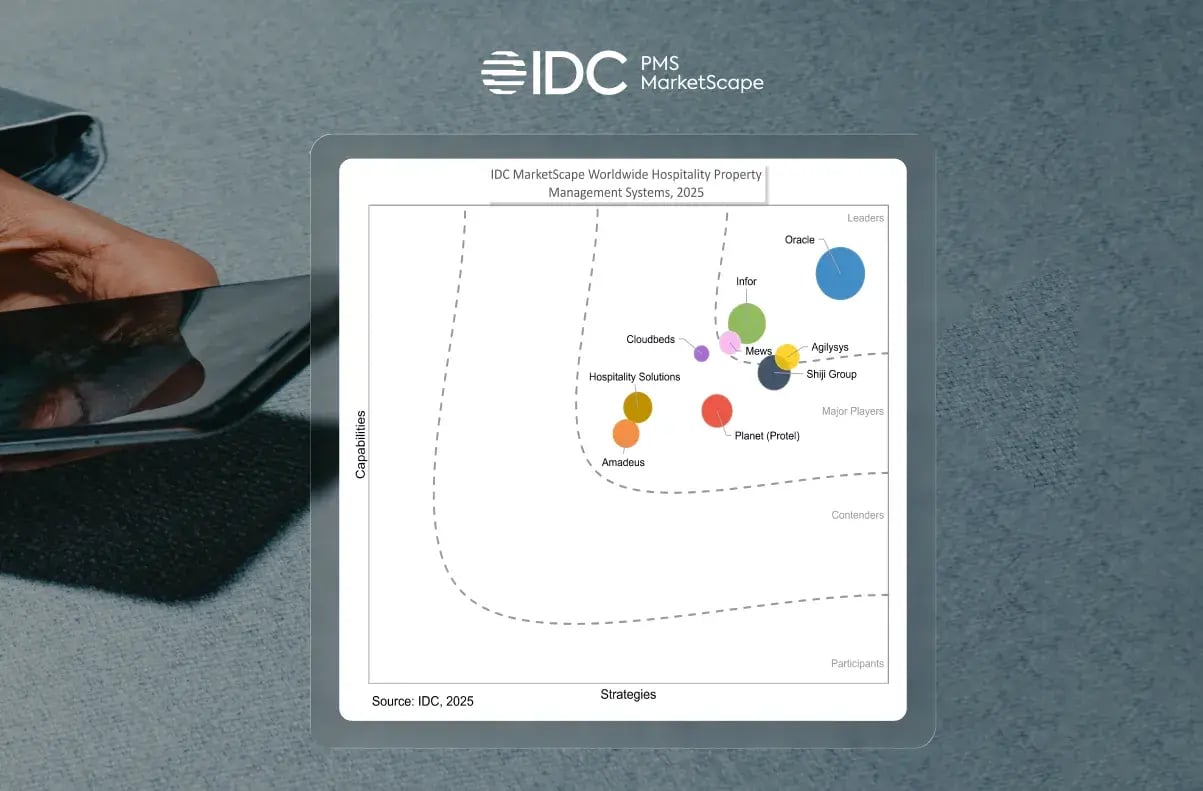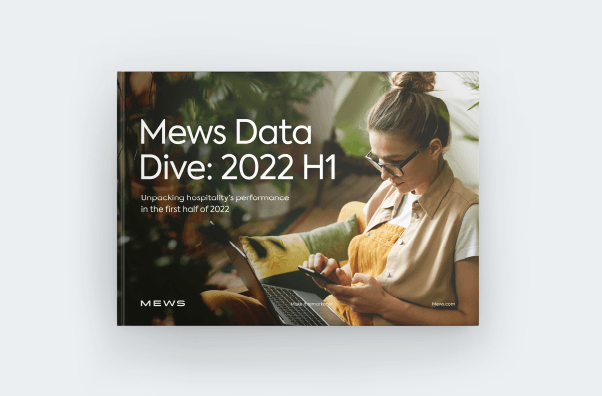Table of contents
You’ve probably heard us talk about data before. We just can’t get enough of it. In fact, we love it so much that we took a whole bunch of data from the first six months of 2022 and sat down to see what we could find.
The result is the Mews Data Dive: 2022 H1. It takes the anonymized data of thousands of properties and looks at the performance and trends in 10 key areas. Interested? You should be.
What’s in the Mews Data Dive?
The Mews Data Dive examines ten key areas that affect all hoteliers. They are:
- Occupancy
- Domestic travel
- Online check-in and kiosk usage
- Chargebacks
- RevPAR and ADR
- Booking lead times
- Additional bookable services
- Hotel staff
- Rate types
- Integrations
Now, we’re not going to go through everything in the Data Dive – otherwise you wouldn’t need to download it and see all our beautiful designs. But here are a couple of sections for you to get a flavor of what’s inside.
Occupancy
Headline news
After two incredibly difficult years (for reasons we don’t need to go over again), occupancy is almost back at 2019 levels. For certain regions – for instance Spain, France, Germany, the Netherlands and the UK – occupancy levels have already reached parity, and the same is true for particular accommodation types such as apartment rentals.
When we look at month-on-month performance, there’s also a positive trend from January through to June, which is broadly what we’d expect to see. Hotels and hostels follow a similar pattern of filling up as the year progresses, while occupancy in serviced apartments also increases as we reach the summer, albeit at a slower pace thanks to strong, consistent performances during the winter.
What does this mean?
Cautious optimism has been hospitality’s motto for the past year or so. Today, uncertainty remains as talk of a global recession continues, but in the short term at least, there are reasons to be cheerful. Record levels of leisure travel are expected during the summer as travelers look to make hay while the sun shines.
Hostels were the hardest hit during the pandemic, so to see their occupancy rates peaking above hotels from April through to June is very encouraging. Campsite occupancy is also on the rise as the northern hemisphere begins its warmer months, something explored in our glamping report.
Rate types
Headline news
As you can see from the charts about, there has been a shift to more flexible bookings since 2019. In 2019, the number of non-refundable reservations was 61%. In the first half of 2022, this number decreased to 48%.
What does this mean?
Ongoing uncertainty around travel restrictions meant that many travelers were wary of booking accommodation in case they were no longer able to travel. In response, many hoteliers decided to offer more flexible reservations. However, this shift isn’t as dramatic as some predicted. Almost half of all reservations made in the first half of 2022 were non-refundable, demonstrating a willingness and a trust in guests to travel. If your property is offering only flexible bookings and still seeing a high cancellation rate, it’s definitely worth brining back a non-refundable option.
That’s it for your sneak peek. Tantalizing, isn’t it? To get your hands on the rest of the data, you know what to do.

2025 IDC MarketScape for Worldwide Hospitality PMS
Download now
Table of contents
Hospitality hot takes straight to your inbox




.webp)
